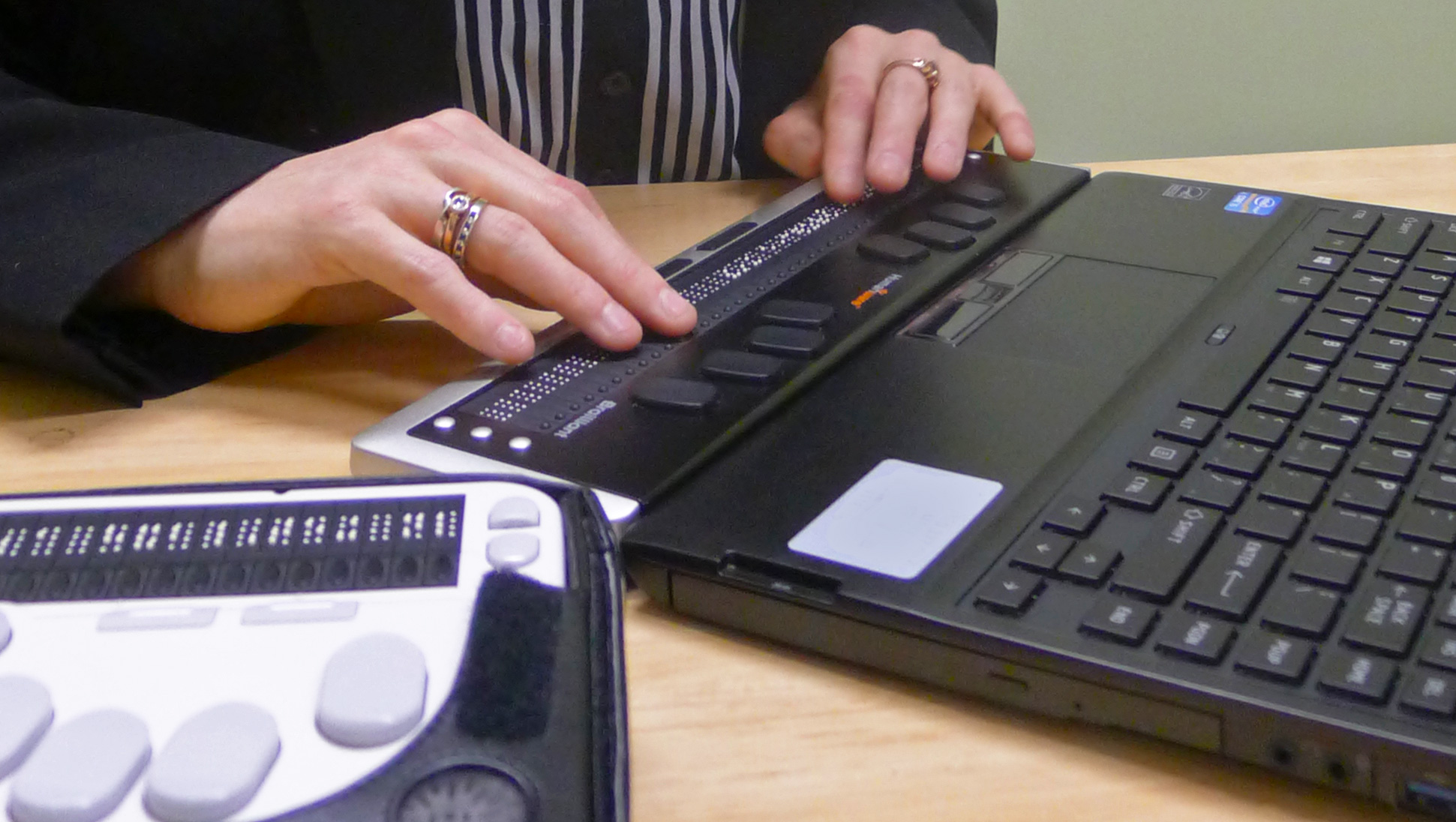Katie Best had no second thoughts about learning Braille after losing her vision as a teenager.
After being born with glaucoma, Katie underwent surgery at the age of 17 in an attempt to stop her vision deteriorating further, however complications from that surgery resulted in Katie losing her vision.
An avid reader who had used large print books prior to losing her sight, Katie took up Braille after losing her sight and proved to be a quick learner.
"It took me about eight weeks to learn Braille,” Katie said.
"For people who start Braille late in life it usually takes them a while to learn, but the lady who was teaching me said that I just happened to be a quick learner.” While she didn’t have to wait long before she was able to use Braille, Katie said she would’ve stuck with it even if it had taken her longer to master.
"Reading is something that I’ve always enjoyed. Before I lost my sight I would use large print books,” she said.
"There are audio books out there, but for me it’s not the same. You don’t get to understand how words are spelt or sounds are made and that’s one of the things I love about reading.”
How does technology help?
Though Braille allowed Katie to continue to enjoy reading, her options of what she could read and where she could read it were limited. Hard-copy Braille books are much bulkier than their text counterparts and may require multiple volumes when transcribed.
The transcription process can also be delayed, with wait times of up to five years common before a book is produced in Braille.
For Katie those challenges were reason enough for her to invest in a refreshable electronic Braille display, which has opened up a much wider range of material.
"I’ve got what’s called a Focus display which I plug into my iPad or computer and it translates what’s on the screen to Braille."
"For me it’s something that’s made a huge difference. It really opens a whole lot of books that I wouldn’t be able to read otherwise. I don’t have to wait years until a book’s available in Braille, it means I can just download it through my Kindle app or another source and read it straight away.”

Refreshable Braille displays use screen reading technology to convert digital files into Braille one line at a time onto a small device similar to a keyboard.
Each Braille cell on the display consists of nylon pins which are electronically controlled to move up and down to display a Braille version of the characters that appear on screen.
Some barriers remain
The display device Katie currently uses is the third she has owned, and while she has kept up as technology has improved she can understand why some people from the blind and low vision community are yet to adopt one.
"Learning how to use the display is pretty easy and I think most people are aware of them, but they’re quite expensive and I think that keeps a lot of people from using them."
"Mine was about $3,000. For people who are blind finding work can be tough which makes it even harder. If the prices came down I definitely think you’d see more people using them.”
Improvements on the way
Jordie Howell, Chair of the Australian Braille Authority and Vision Australia Braille instructor and transcriber, believes the invention of refreshable displays have been a much needed positive for the Braille using community, but she agrees their benefits will be fully seen once the cost barrier is reduced.
"The refreshable displays have really been a huge step forward, it means people can carry around the small machine and use it to read, rather than having to carry a number of books or rely on audio,” she said.
"Once they become cheaper and we get to where they have a whole page rather than something like the 40 or 60 characters they have at the moment then I think we’ll really start to see the benefits.”
For Katie, who predominantly uses her display for reading books, having the text turned into one line of Braille at a time is sufficient for her, however she realises the benefits further advancements could have.
"I can only read a book one line at a time, so I don’t really need anything more than that."
"But if you’re a person who is blind and you want to read something like a page of music or graphs then having a display that’s more than one line would certainly help you in that.”
Interested in Braille displays and wider world of assistive technology? Check out what's on offer in the Vision Australia shop.










